It must be our lucky month for tea-meetings: two weeks after seeing Nada, Mr. and Mrs. GV came to visit, despite dark skies and heavy summer rain.
We scuttled around college quads under the cover of umbrellas, then headed back to base...
We scuttled around college quads under the cover of umbrellas, then headed back to base...
...for some warming teas. Setting up the teaware on the dining table, we had a good view of rain pummeling the outside of the house, windows whipping the leaves of our cherry tree in the front garden. The rougher it is outside, the cosier it is indoors - especially with friends.
GV has some incredible cups, pictured above, which my imperfect memory suggests are Qing Dynasty. They made some great cups back then. These four little friends were particularly dense, meaning that they retained heat forever. I particularly loved their wide aspect, which promotes cooling of the soup. As you may remember from previous articles, I'm used to tiny little brown cups (pictured at the end of this article) with partnering wenxiangbei [aroma cups]. However, I could easily be converted to cups like these!
Let's fire up the tetsubin and push away the cold...
Let's fire up the tetsubin and push away the cold...
We started out with the bingcha version of the famous 2004 Taihe cake that GV bought from Zhou Yu himself (respected owner of the Wisteria Teashop in Taipei). I previously tried the maocha from this "benchmark" cake, and was struck by its thin character. The cake is infinitely more potent: the same reedy, straw-like nature, but with strength and texture that I found to be absent in the maocha. The face of the cake is covered in huge, long leaves all aligned in the same direction such that their stalks are parallel.
GV noted that the 2004 is Zhou's favourite, with the quality falling off rapidly in successive years, until cessation of production in 2006 at which point he became unimpressed with the farmers. To try this cake at our own tea-table was a great privilege, but to do so with tea-friends was a singular luxury.
Next up: a beautiful 1970s roasted Baozhong, from the shop that made the "Wang process" famous, where tea is roasted using wood burned beneath holes in the shop floor - rather than conventional charcoal roasting. The result was a sweet, fruity flavour, where the roast was complementary in its sweet-chestnut character, rather than dominating.
A dalliance with the delicious 2009 Nada "Yiwu Mahei" proved a little green for the physiology of our guests, so we headed into the star appearance...
GV noted that the 2004 is Zhou's favourite, with the quality falling off rapidly in successive years, until cessation of production in 2006 at which point he became unimpressed with the farmers. To try this cake at our own tea-table was a great privilege, but to do so with tea-friends was a singular luxury.
Next up: a beautiful 1970s roasted Baozhong, from the shop that made the "Wang process" famous, where tea is roasted using wood burned beneath holes in the shop floor - rather than conventional charcoal roasting. The result was a sweet, fruity flavour, where the roast was complementary in its sweet-chestnut character, rather than dominating.
A dalliance with the delicious 2009 Nada "Yiwu Mahei" proved a little green for the physiology of our guests, so we headed into the star appearance...
Heavens, our guests seem to have some insanely good tea. Nada spoiled us with 1930s liu'an, and GV spoiled us with this landmark tea from the "masterpiece" era: the 1960s "Bazhong Huangyin" [BAH-DJONG HWANG-YIN, 8-zhong yellow-mark], which follows the famous red- and blue-mark cakes.
The notes at Houde, where this sample comes from, indicate that it falls into the era between the mark-cakes of the 1950s and the "qizi bingcha" [7-sons cake-tea] era. It is one of the first, if not the first, cake with the now-familiar CNNP wrapper, with zhong-cha characters in the centre, but with pinyin romanisation of the upper and lower character strings.
The notes at Houde, where this sample comes from, indicate that it falls into the era between the mark-cakes of the 1950s and the "qizi bingcha" [7-sons cake-tea] era. It is one of the first, if not the first, cake with the now-familiar CNNP wrapper, with zhong-cha characters in the centre, but with pinyin romanisation of the upper and lower character strings.
We used the whole 10g sample (pictured above), brewed in a lovely pot of GV's (pictured below), which he bought in Shenzhen. The pot's mottled skin began to glow under the rinse. It looked very happy to be brewing Huangyin.
The leaves are large fragments of big leaves, with a mild shicang [wet storehouse] aroma. The particulate nature of the tea entirely blocked my filter - that is, it totally sealed the filter preventing passage of the tea. Later infusions became much cleaner, courtesy of the big leaves.
The soup is rich and dark. I've been drinking this for most of the next day (a Sunday, thankfully), and even after 25 infusions, it remains dark red. This is a hugely potent tea. The longevity is greater than anything I've encountered to date.
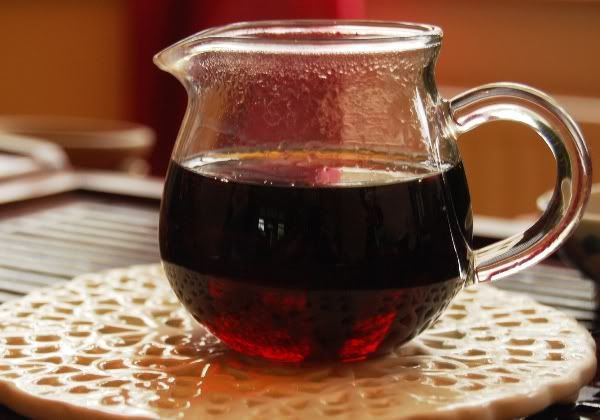
The tea that never dies
It's also one of the sweetest old teas that I've ever encountered: the aroma and flavour are sweet, sweet, sweet in their woodiness. As you can see, the soup has a shining clarity about it.
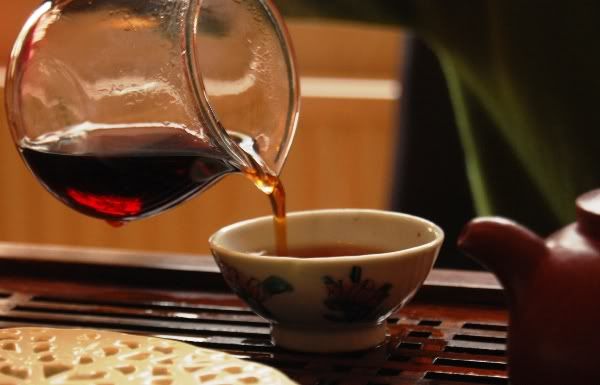
It's surprisingly forgiving to brew, too
Thick and chunky, it dwells in the throat forever, resounding long and sweet. Even the very first sips in the session the next day feel significantly narcotic. Something is at work in this tea, and my pulse rate decreases noticeably.
I breathe out a whole world of cares in one long sigh...
I breathe out a whole world of cares in one long sigh...
During the next day, the malty, sweet character continues undaunted. After two days of drinking, I box it up to take into my office to keep me company during the coming week. A remarkable experience.
After such a treasure, there was only one way to finish the evening: the mighty huoguo [HWOH-GWOH, hot-pot], a dish traditionally made of napalm into which one dips chunks of food, rather like a fondue.
Thanks again to Mr. and Mrs. GV for braving the weather, and for great generosity in making the tea-session so special with their presence and tea. I look forward to a repeat performance on the "away" venue!
Late edit: day five, over 60 infusions later, and the Huangyin soup is still thick and woody, orange-yellow in colour, and giving a heavy chaqi that makes me feel exceedingly calm. Five days!
After such a treasure, there was only one way to finish the evening: the mighty huoguo [HWOH-GWOH, hot-pot], a dish traditionally made of napalm into which one dips chunks of food, rather like a fondue.
Thanks again to Mr. and Mrs. GV for braving the weather, and for great generosity in making the tea-session so special with their presence and tea. I look forward to a repeat performance on the "away" venue!
Late edit: day five, over 60 infusions later, and the Huangyin soup is still thick and woody, orange-yellow in colour, and giving a heavy chaqi that makes me feel exceedingly calm. Five days!


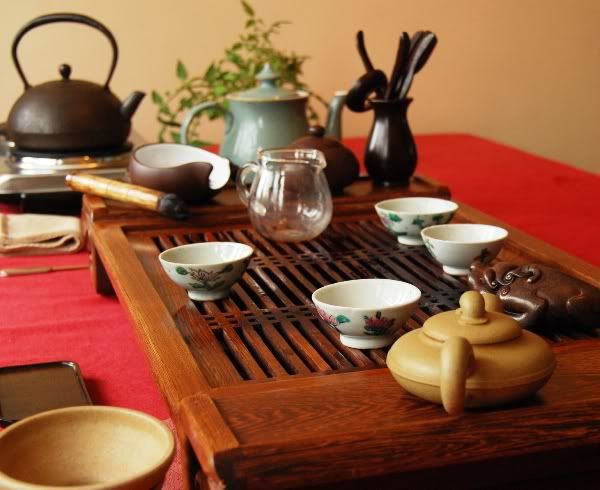
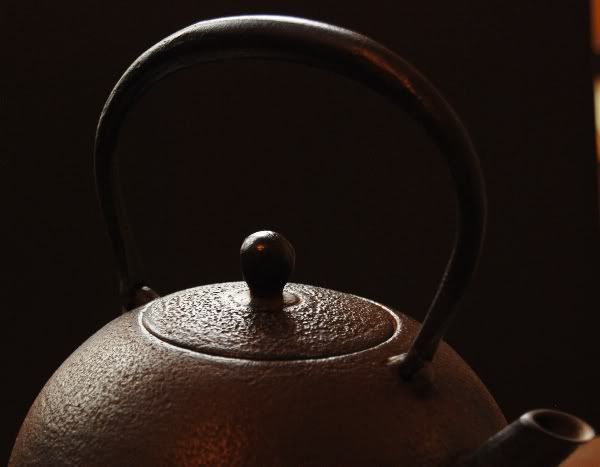
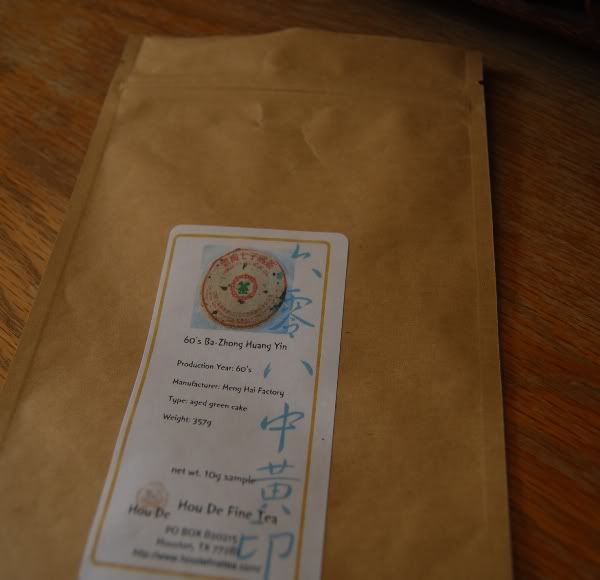
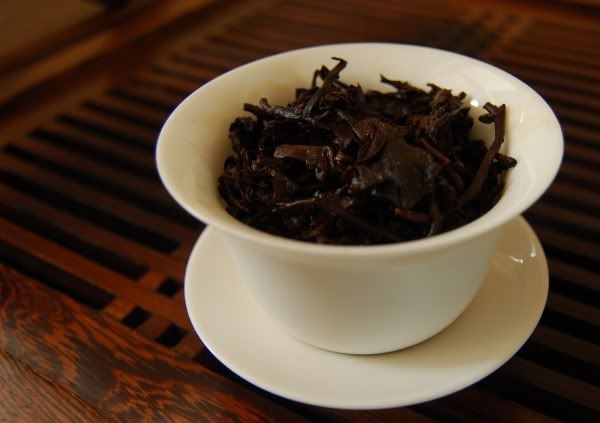
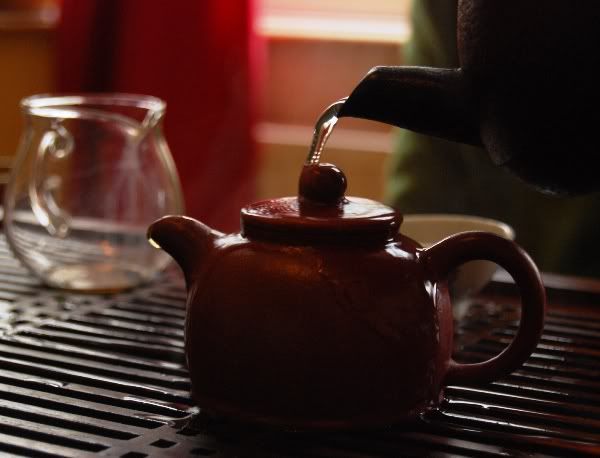
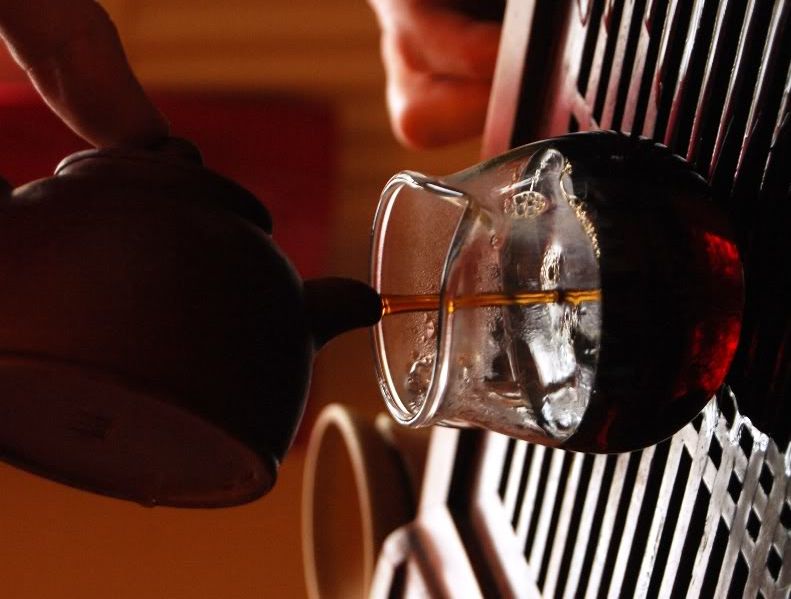
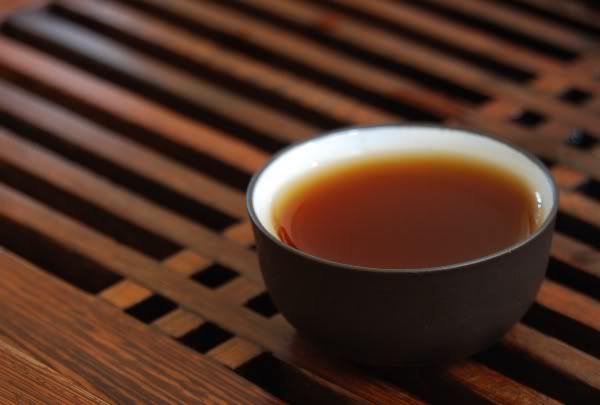
17 comments:
Sixty infusions?! I've never heard of such a thing.
Despite the price of that tea, that is serious value for money!
Dear Steven and Jack,
It's currently on day six of the same tea, and it must have infused well over ten litres of tea by now. It's still golden yellow, thick, and very smooth, with a taste of mahogany. It's absolutely remarkable just how long these leaves can go and still produce solid, interesting brews.
Toodlepip,
Hobbes
I must say that sounds rather Impressive.
Perhaps I should hold onto the Late 90's Remake of the Huang Yin bing I picked up from Nada for say another 40 years or so, to see if it has even close to the potential it seems that one had.
Quite impressive.
Adam
Hope you continue the journey. Perhaps it will last 10 more days? or even 20?
A thermo cup over night brew perhaps? Yummm! T
Dear Adam,
Surely it's much more tempting to drink it now!
Dear Toki,
I think you're onto something there - an insulated mug, or vacuum/Thermos flask might do the trick. The infusions are getting a little cold now that I have to leave 10+ minutes between each. Thanks for the suggestion!
Toodlepip,
Hobbes
Hi Hobbes
we have indeed enjoyed the company, the tea and the food. We will look forward to meeting you again at some point soon.
GV
Having been lucky enough to have this tea twice, I can say that in my opinion, it's probably the best aged pu'er I've ever tried. I even liked it over the 50s Hong Yin.
Dear GV,
Enjoy your time abroad - keep us posted with progress at the tea fair.
Dear Will,
It sounds as if you've been to the Houde tea-tasting event from a few years back! I'm hoping that Guang will run one in England... ;)
Toodlepip,
Hobbes
Day seven of background-infusing the 60s Huangyin in a gaiwan. Infusions are about 10 minutes long. Bafflingly smooth and woody.
This tea is now a centurion, having given 100 solid infusions!
Toodlepip,
Hobbes
I realized that some teas are better the next day. I was wondering if its safe to drink? The aroma is better, but I would think it would be tastier to have fresh green tea like a fresh pot of coffee? I guess not.
Dear LLTL,
I would say it's absolutely safe to keep your leaves in the pot overnight. The addition of boiling water to your leaves will remove any doubt.
It's essential to keep older shengpu overnight, in order to keep drinking as much as it has to offer. Throwing away a "masterpiece" after one day, such as the 60s Huangyin for example, would be sacrilege!
For non-pu'er "green tea" (lvcha), I don't bother storing overnight - they don't tend to have the legs to do multiple sessions.
Toodlepip,
Hobbes
Sounds amazing! Do you just let the leaves sit in the pot/gaiwan overnight, then give it a quick rinse the next day before you start where you left off?
Another stellar post ... great pictures, great story, and great tea! Thanks.
Dear Justin,
That's about right - though I tend not to bother rinsing them the morning after to no ill effect so far!
Dear Salsero,
Glad you enjoyed it - thanks for the comment. :)
Toodlepip,
Hobbes
Sir, are you still at it? What was the number of the last brew? Amazing.
--ST
Dear Seb,
I gave up counting after it made its century!
Best Singaporean wishes,
D
Post a Comment